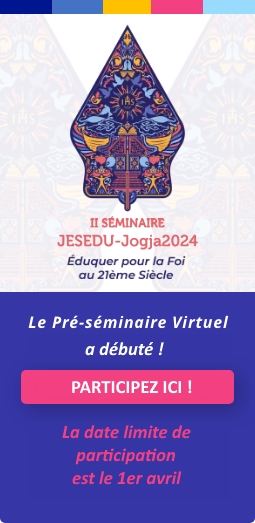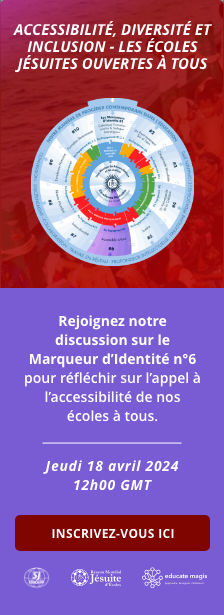The great proponents of education, John Dewey and his followers, have promoted child centered curriculum where teaching and learning is done focusing on the individual personality and capacity of a child. The child becomes the center of educational process. Research also shows that such educational approach brings out the best in children in various fields. However, In India, due to the pressure to complete the syllabus, such methodology is hardly practiced. Hence, teaching and learning remains mostly syllabus centered or teacher centered.
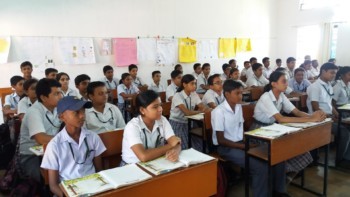 In Jesuit schools, it is expected that IPP (Ignatian Pedagogy of Paradigm) based on Jesuit characteristics of education is put into practice. In reality this expectation is only heard in theory during orientations or discussions but not seen in practice. The idea of Cura Personalis totally supports the child centred teaching and learning. I don’t deny there may be some who are making sincere efforts to impart education based on Child Centred teaching and learning.
In Jesuit schools, it is expected that IPP (Ignatian Pedagogy of Paradigm) based on Jesuit characteristics of education is put into practice. In reality this expectation is only heard in theory during orientations or discussions but not seen in practice. The idea of Cura Personalis totally supports the child centred teaching and learning. I don’t deny there may be some who are making sincere efforts to impart education based on Child Centred teaching and learning.
At De Nobili School, Bhuli, it’s the same story. Teachers rush to finish the syllabus within a given time as there are so many activities going on throughout the year. When I started teaching Physics for Class VI and Chemistry for Class VII, my concern too was to finish the portion within the given time. As I was teaching the subject after a long time, I had to relearn the subjects by myself, still I realized that I had to change my method of teaching subjects to the students who come from semi urban areas.
When “Adhyayan” organization began the assessment of four De Nobili Schools, I got involved with them, and realized the importance of child centred curriculum. One of the assessors, Ms. Neha Chedda led the internal assessment team to discuss deeply on how we engage our students of 21st century, known as digital natives in today’s world through our teaching and learning. Most of our students come from middle class families, so first time English speakers who find it hard to understand the difficult concepts in their learning.
I began to ask myself how to make my teaching more engaging to my students so that they can benefit the most in the classroom as well as outside. I began to experiment with various methods of teaching. I started with peer learning method where two students with varying academic performance in each bench first read the paragraph intently, then discussed with his/her partner if they had any doubts or question. If they were not able to get appropriate answer, the question would be asked to the whole class, and one of the students would try to answer it. I would jump in when none of them were able to answer the question. There were times when I myself didn’t know the answers. In such cases, I would acknowledge my inability to answer their questions, and promise them to give the right answer the next day. Sometimes, I would ask them to explore the question in the house checking in the internet or other sources, and come back to the class with an answer. I would summarize the lesson at the end of the class. I found this approach motivating the students to pay extra attention in their reading, helping them to ask questions. I would encourage quiet students to ask questions.
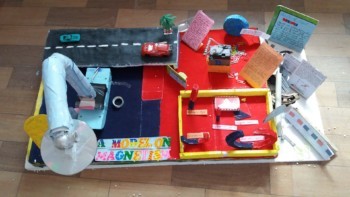 In the next step of teaching and learning process, I gave them the task of chart presentation on the themes based on the chapter. It had to be done in groups which were divided based on the performance in the last semester, and consisted of students with varying grades. This activity based on cooperative learning technique made them quite serious about their learning by researching the theme from various sources. It seems to be better than the individual projects which were merely done by writing what was given in the text book by the most. As an incentive, I promised to reward the best two chart presentations, as well as they were to be included in the internal assessment. It all the more motivated them to come out with creative ways of presentations. At the end, all the charts were pinned or pasted to wall of the classroom, so that all the students can learn from each other’s presentations.
In the next step of teaching and learning process, I gave them the task of chart presentation on the themes based on the chapter. It had to be done in groups which were divided based on the performance in the last semester, and consisted of students with varying grades. This activity based on cooperative learning technique made them quite serious about their learning by researching the theme from various sources. It seems to be better than the individual projects which were merely done by writing what was given in the text book by the most. As an incentive, I promised to reward the best two chart presentations, as well as they were to be included in the internal assessment. It all the more motivated them to come out with creative ways of presentations. At the end, all the charts were pinned or pasted to wall of the classroom, so that all the students can learn from each other’s presentations.
In the next chapter, I also included the exercise of working models done in groups based on cooperative learning method. I was flexible about the groups, however with one condition that half of the members should be average or below average students. I was quite impressed by their interest and motivation. For class VII, they had to make water harvesting models, and for class VI, they had to make working models based on the uses of magnetism. I requested three science teachers to interview the groups in order to find out their knowledge and skills in making the working models. This experiment positively motivated the whole class to do well in the subjects, and use their time to explore more about the subjects.
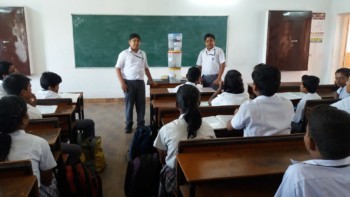 For the students of class VII, I included a teaching project, in which students had to teach a part of a chapter to the whole class in groups. I introduced this exercise because teaching is the best way of learning as proved by research. It was a hard exercise for them, as they had to stand before the whole class and explain the lesson. However, this exercise created maximum interest and curiosity among the students. At the same time, they realized how difficult it is to teach. Some extrovert bright students did well, but others, introvert and weak students, found it really difficult because of their lack of knowledge of English and subject matter. Overall, this is a great learning exercise for them as they had to teach the subjects as well as answer the questions asked by their peers. I was happy to see many students standing up and asking questions. I, as a facilitator, made sure that every student gets chance to ask a question, and the subject matter is properly discussed. I was quite impressed by their active and cooperative participation which enhanced their learning outcome.
For the students of class VII, I included a teaching project, in which students had to teach a part of a chapter to the whole class in groups. I introduced this exercise because teaching is the best way of learning as proved by research. It was a hard exercise for them, as they had to stand before the whole class and explain the lesson. However, this exercise created maximum interest and curiosity among the students. At the same time, they realized how difficult it is to teach. Some extrovert bright students did well, but others, introvert and weak students, found it really difficult because of their lack of knowledge of English and subject matter. Overall, this is a great learning exercise for them as they had to teach the subjects as well as answer the questions asked by their peers. I was happy to see many students standing up and asking questions. I, as a facilitator, made sure that every student gets chance to ask a question, and the subject matter is properly discussed. I was quite impressed by their active and cooperative participation which enhanced their learning outcome.
There are few other exercises such as Audio Visual interactive sessions, science practicals, hands on experience with fire extinguisher, water harvesting set ups, and demo classes. All these experiments with teaching and learning, and I am sure there are many more, can enhance child centred learning, helping the students to take responsibility for their own learning, and at the same time supporting one another in the pursuit of learning. I gave them options to come to me for any help they required individually or in group, or approach other teachers and sources to enhance their learning. I have realized that such engaging teaching and learning, not only motivates students, but also makes everyone in the classroom, including the teacher, ongoing, cooperative and joyful learners.
Se connecter ou Adhérer
pour créer et afficher des commentaires
